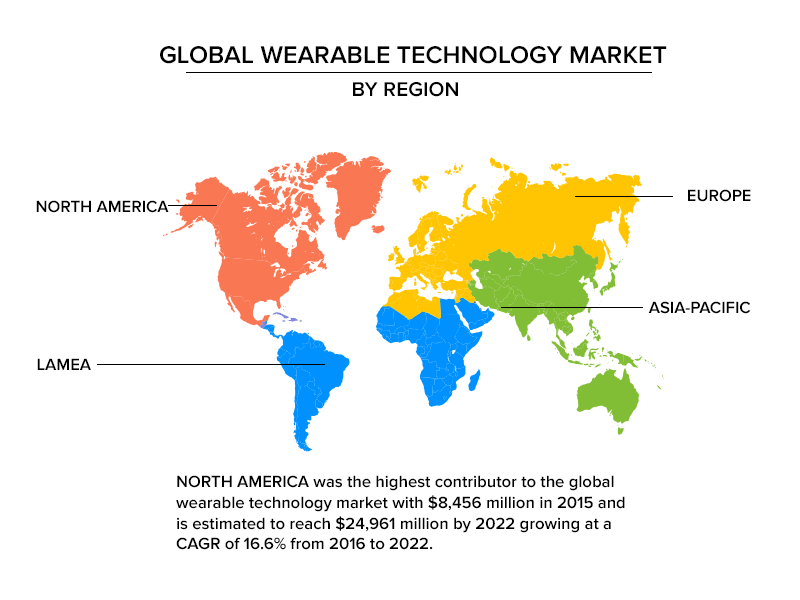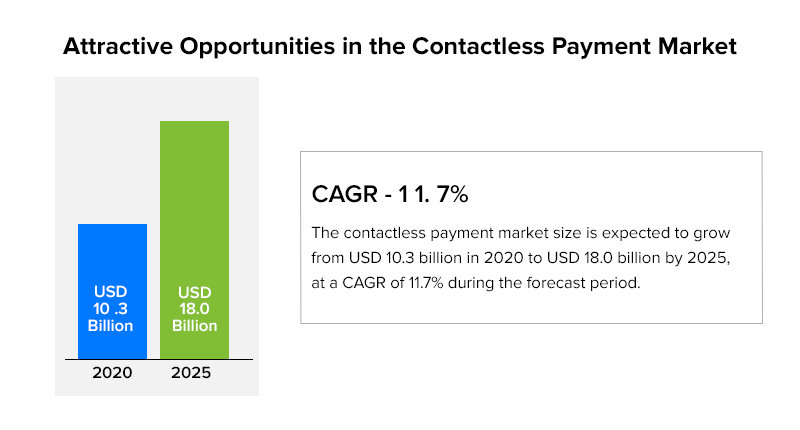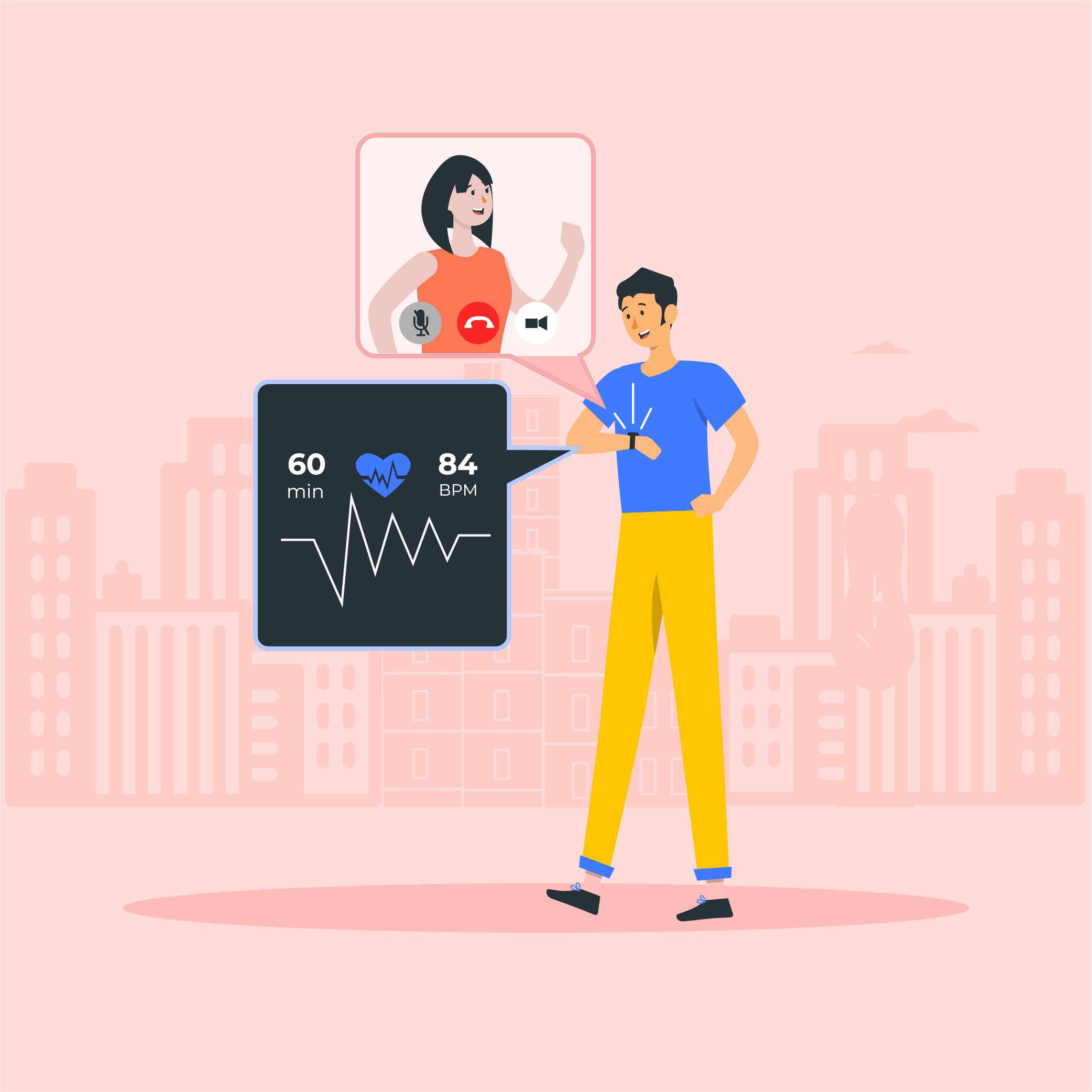7 Dominant Trends Underpinning Wearable App Development in 2021
Wearable technology is influencing mobile app development trends and covering a broad range of industries with its versatile and optimal performance.
The epoch we currently live in has gained a reputation for mobilizing futuristic technologies in the present and smashing our notions of what’s possible to the ground. Business solutions have precipitated into a reality that exudes the most fundamental tenets of humanism and makes us masters of our well-being.
The upcoming wearable technology is one link in the chain of engineering evolution with future-headed possibilities. For one, the segment is experiencing a rapid build-up of new categories that are reforming mobile application development as we know it.

The applications of wearable technology engulf us from head to toe be it through smartwatches, to head-mounted gear, and footwear. Data suggests that North America is the place to be if you want to realize the immediate benefits of wearable technology ideas turn real-life solutions. And the reason for that is 5G. The continent would spearhead the establishment of the most 5G connections with wearables in 2022.
Therefore, if you operate in the wearable app development space, you need to take preemptive measures that marry regional demographics with the wearable technology trends in 2021.

The Rational Driving Wearable App Development in 2021
25% of the adult population of the USA is projected to use wearable devices by 2022. This demography cries out for multi-platform connectivity and a bunch of other user-friendly features. It possesses a unilateral potential to make or break the future of wearables. The benefits of wearable devices kept aside, app development in this domain is an area of expertise that should factor the following.
Integrating the Internet of Things
IoT refers to the digital fabric of interconnected devices. Its main principle is to connect devices and enable data exchange to compute logical conclusions for smarter living. But connectivity is not a random tenet of IoT, it is also one of the basic expectations of the users of wearable mobile devices. The future of wearable technology in relation to IoT can be envisioned through a customary overview of the healthcare sector. Here’s a list of wearable IoT devices that healthcare institutions are rolling out:
- Glucose trackers
- Wearable defibrillators for heart patients
- Sports utility equipment to avoid concussion
- Remote asthma monitors
- Bluetooth enabled tracking apps for cancer patients

Home automation systems and fitness trackers fall under the all-pervasive umbrella of IoT. Big Tech is betting big on IoT and shaping the wearable tech future. Apple and Google are targeting retail customers through products like the iWatch, and the smart lens. Samsung, in addition to its Galaxy smartwatch, has wearable IoT solutions for fleet management. The writing is on the wall, when it comes to the future of wearable devices, the internet of things has to be part of the conversation.
Wearable application developers must integrate IoT into their products if they are to mark their turf in this field.
Custom app functionalities
Earlier, we discussed some of the in-app features that wearable app development services should focus on. In our experience, such apps require lesser resources as their memory and hardware are low-cost in contrast to mobile devices. Consider the case of smartwatch app development for instance. While everyday mobile apps could be flooded with a deluge of unwarranted features, a smartwatch will constrain itself to its core function, telling time.
Since North America is the center of wearables at the moment, wearable app development services in the USA are positioned at the vantage point of shaping futuristic wearable technology. As part of this elusive covenant, Appinventiv focuses strictly on core app specifications and not dilly dally in attaching wearables with redundancies.
As O’Reilly put it, the need of the hour is to balance fashion with function and that cannot happen without subject matter expertise. As a wearable app development company, we nurture a procedural, yet flexible innovation environment with a team of 500+ mobility solution experts.
Shared data ownership
The Internet of Things has leaped to rebrand itself as the Internet of Everything. By 2025 it is projected that the total connected IoT devices would total 30.9 billion. Together, they would produce 79 zettabytes of data. For the uninitiated, one zettabyte is equal to 1,000,000,000,000,000,000,000 bytes.
The following source of data will contribute the most to this cycle:
- Industrial control systems
- Business Applications
- Wearables
- Sensors & devices
- Web data
- Digital media
- Location trackers
We are at an inflection point in the relationship between wearable apps and humans. IoT data collection will force marketers to experiment with unconventional approaches and shun senile, old-school mindsets. Not to mention the emergence of self-governing AI algorithms that operate on minimal data minus the dependency on volumetric data sets. In tandem with Gartner’s data analytics prediction for 2021, wide data will be key to the future of wearable technology.
Examples of wearable technology such as fitness trackers, smart eye-wear, and body-mounted gear creates data that allows hardware/software vendors to map consumer profiles. Shared data ownerships enable the confluence of wearable tech companies with e-commerce platforms.

Power to GPS wearables
Google glass, GoQii, Spotnsave, and wristbands are some examples of wearable technology that collect user location. Presently, such devices have gained immense popularity amongst people as they are pocket-friendly and affordable. Most of all, with a single tracker, guardians can maintain protective, remote supervision over adolescents.
The future of wearable technology rests on the integration of GPS tracking in devices. Self-driving cars are powered with real-time GPS updates helping them navigate safely. Who is to say, a smartwatch would not be able to do the same in time to come!
e-Payments through wearables
By 2025, the global contactless payments marketplace will be valued at $18 billion. As stated by Marketsandmarkets, smartphones and wearable technology in business will contribute to this surge, underpinned by social distancing norms due to a perpetuating pandemic. Private banks are introducing wearable, contactless payment devices for people on the go.
Near Field Communication Technology (NFC) is used to connect a smart device with assets like credit cards, debit cards, and prepaid cards. As a wearable App development company in the USA, we can be your in-house agency for such projects. Our experiential faculties have the capabilities to produce wearables ground-up equipped with e-payment gateways.
With a wireless network, users could flash their wearable device in front of the terminal and transact instantly.

Smartwatch development
Consumer psychology will forever remain the same – do more with less. Smartwatches offer a relatable experience to smartphones at much less a price point.
Smartwatches can double up as a fitness tracker and a mini-smartphone. In the age of instant interaction, they help you receive social media notifications. Some of the products like Pebble have batteries that outlast even the best of smartphones. And in case you were wondering, they come with built-in support for YouTube. Health-conscious people can track their sleep, glucose levels, calories burned, and even stress levels with the right (smart)watch.
As a wearable technology company, we can conclusively say that enabling smartwatch interfaces to interact with home appliances is the next wow.

Beacon technology
Beacons are wireless transmitters that operate on low-power Bluetooth technology using which they interact with the devices in their vicinity. They can connect with nearby smart devices and exchange information to facilitate location-based searching.
When it comes to the nervous system i.e. hardware, it is as simple as a CPU, radio, and a couple of batteries. Given the simplistic nature of beacon technology, it comes as a no surprise that it is being integrated into wearables such as smartwatches.
A wearable device app development company like ours predicts a tangential growth of beacons in the immediate future.
![]()
Where From Here?
Apart from a certain pomp-factor that wearable devices endow the users with, they bring along numerous lifestyle benefits. Touchless business operations, on-demand action, and an immersive experience, wearable devices sanction enough reasons for adoption during the pandemic.
A corroborating factor of this is that wearable device manufacturing is picking up pace and so is the corresponding app engineering. As a wearable technology company, Appinventiv has delivered over 25 products (and counting) in the field.
Let’s not beat around the bush. You need a feather touch of technological expertise, and we embrace new relationships.
What are you waiting for then, let’s talk!

strategies your digital product..



